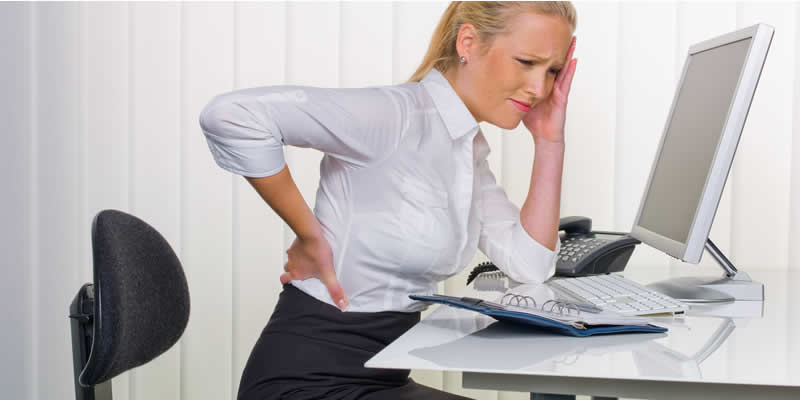I sit down for living, how does this affect me?

If you’re spending hours at the office desk stuck in front of a computer, then there is pretty good chance that you too have developed less than perfect posture.
While we know that poor sitting posture is bad for us, we usually tend to ignore it because it’s what we need to do in order to complete the job.
Office workers spend close to 97% of their time on their bottom.We sit to eat, to work, to drive to get to work and to relax. This is not what we were design for. As a result, posture is compromised. There is a shortening of the calves and hamstrings and we are supported by weak hips. We develop poor core stability increasing the strain on the lower back, and our shoulders begin to round off.
To go further there are other health risks:
Within five days of changing to a sedentary lifestyle, your muscles aren't taking in fat and your blood sugar levels go up, putting you at risk for weight gain. After just two weeks your muscles start to atrophy and your maximum oxygen consumption drops. This makes stairs harder to climb and walks harder to take. Even if you were working out every day the deterioration starts the second you stop moving.
After a year, the longer term effects of sitting can start to manifest subtly. According to this study by Nature, you might start to experience weight gain and high cholesterol. Studies in woman suggest you can lose up to 1 percent of bone mass a year by sitting for over six hours a day.
The human body simply isn't built to sit all day at a desk. Many of us spend more time sitting than sleeping. To avoid the health risks, we need not just 30 minutes of daily exercise, but taking every opportunity to get up during the day.
You only need to do two things to counter the effects of sitting all day:
- Remember to stand once an hour.
- Get about 30 minutes activity per day.
In a perfect world you would be able to get up out of your chair and go for a walk every hour. That’s not always possible for many people, but getting in a little movement during the workday could help save you from strain or pain.
We know that if you stand up for just one or two minutes every hour, it can reduce the negative effect of sitting all day. Every hour you’re working try to remember to get up for a few minutes and stretch.
- Take a few deep breaths and if you can.
- Take a short walk (or at least a few steps)
- Gently roll your head around and then stretch your legs.
An Australian study suggests short breaks from sitting once an hour can alleviate most of the problems, furthermore according to recent studies breaking up sedentary habits have metabolic benefits.
Reference:
Júdice, P., Hamilton, M., Sardinha, L., Zderic, T., & Silva, A. (2016). What is the metabolic and energy cost of sitting, standing and sit/stand transitions? European Journal of Applied Physiology, 116(2), 263–273. https://doi.org/10.1007/s00421-015-3279-5
How sitting all day is damaging your body and how you can counteract it - Thorin Klosowski - Lifehacker | 26 January, 2012
Breaks in sedentary time - Genevieve N. Healy, MPH1, David W. Dunstan, PHD2, Jo Salmon, PHD3, Ester Cerin, PHD4, Jonathan E. Shaw, MD2, Paul Z. Zimmet, MD2 and Neville Owen, PHD1 - Genevieve Healy, Cancer Prevention Research Centre, School of Population Health, The University of Queensland, Herston, Queensland | February 5, 2008
Site designed by Release-Remedial Therapies© | Login

We'd love to hear your reaction
Send Cancel